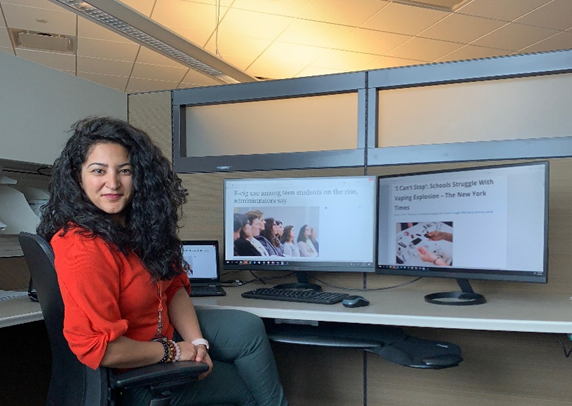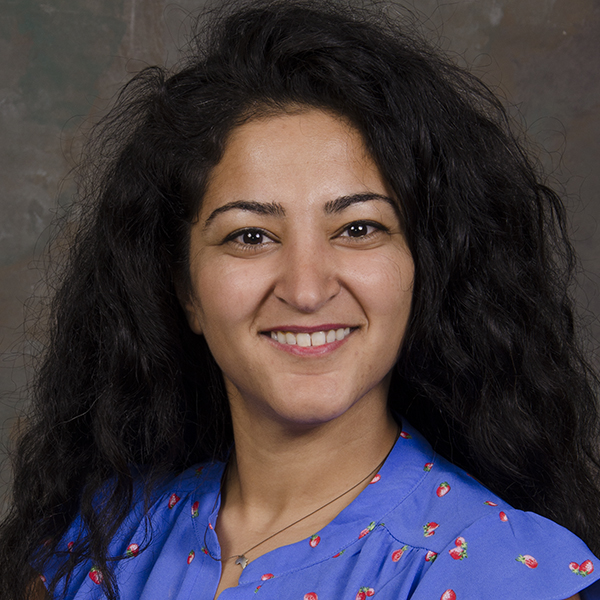The New “Cool” in School: A Media Content Analysis of JUUL Use Among US Schools
- Electronic cigarettes (e-cigarettes) are battery-powered devices that can deliver nicotine and flavors to the user in the form of an aerosol. E-cigarettes come in many shapes and sizes, and in recent years, e-cigarettes shaped like USB flash drives have become increasingly popular among U.S. youth. JUUL is a type of USB-shaped e-cigarette, which is the most commonly sold e-cigarette in the U.S. – by January 2019, the brand comprised 75% of all e-cigarettes sold in the U.S. The rise in JUUL sales has coincided with skyrocketing rates of e-cigarette use among U.S. youth, which the U.S. Surgeon General has called an “epidemic.” Many state departments of health and education have reported the use of e-cigarettes, including JUUL, on school grounds. In order to address this public health epidemic, novel and nimble surveillance activities are critical to inform public health practice. This study used a novel source of information – media articles – to collect data to help inform efforts to reduce youth e-cigarette use nationally, including efforts to educate schools, parents, and students about the dangers of youth e-cigarette use and how to prevent it.
- After identifying 143 articles, we found that school personnel across 42 states and D.C. have discussed increased e-cigarette use by students’ on school grounds. School personnel and students reported in media articles that one of the factors behind the popularity of e-cigarettes is because they are small, slim, and sleek design that looks like a USB-flash drive or a pen. These characteristics make it very easy to use discreetly. The news reports also indicate that bathrooms, classrooms, ands hallways are common areas school personnel found students using e-cigarettes. School personnel also report being worried that students do not know these products contain nicotine, which is highly addictive and can harm the development adolescent brain.
- Schools and school districts report addressing this issue by updating their tobacco-free policies to include e-cigarettes, educating students, teachers, and parents about the risks of youth e-cigarette use, and implementing disciplinary actions. Some schools have also reported installing cameras and sensors, banning USB flash drives, referring students to law enforcement, shutting down bathrooms, and taking down bathroom doors to prevent and catch students using e-cigarettes on school grounds. During our research, it became clear that schools could not do this on their own, and that a collaborative approach from students, parents, schools, and the community is warranted to effectively address this critical public health issue. Additionally, the findings indicate that there is an urgent need for evidence based resources and information to assist schools with addressing youth e-cigarette use. These data can help inform the development of such resources, and also serve as a foundation for subsequent research using more robust data collection techniques, including surveys of students, educators, and parents.
“E-cigarettes are the most commonly used tobacco product among youth in the United States, and these products contain nicotine, which is highly addictive and can harm adolescent brain development. This novel and rapidly evolving public health issue will require novel and rapidly evolving strategies to address it. What gets measured gets done, and this study used a novel, rapid-response data source – media articles – to measure this important issue and to provide timely information to help guide programs, policies, and practices to protect our nation’s youth from this completely preventable health risk.”
– Mays Shamout, MD, MPH, EIS Class of 2018
 [PNG - 592 KB]
[PNG - 592 KB]Mays Shamout, MD, MPH, EIS Class of 2018
CDC Media Relations
(404) 639-3286
media@cdc.gov

Mays Shamout, MD, MPH,
EIS Class of 2018
CDC National Center for Chronic Disease Prevention and Health Promotion Office on Smoking and Health
Education: MPH: University of Liverpool, 2017
MD: Saba University School of Medicine, 2011
Medical University of Lodz, 2008
BSc: Dalhousie University, 2006
Work Experience: Medical Physician, MetroHealth
Medical Center, Cleveland, OH, 2016-Pres
MetroHealth Medical Center, Cleveland, OH, 2011-2015
Medical Physician, MetroHealth Medical Center, Cleveland, OH, 2016-Pres
Volunteer Experience: Faculty supervisor, MetroHealth
Hospital, Global Health Education and Experience (GLEE), Cleveland, Ohio, 2017-Pres; Physician, Neighborhood Family Practice – Refugee Clinic, Cleveland, Ohio, 2013-2015; Hospital, Global Health Education and Experience (GLEE), Cleveland, Ohio, 2017-Pres; Physician, Neighborhood Family Practice – Refugee Clinic, Cleveland, Ohio, 2013-2015;